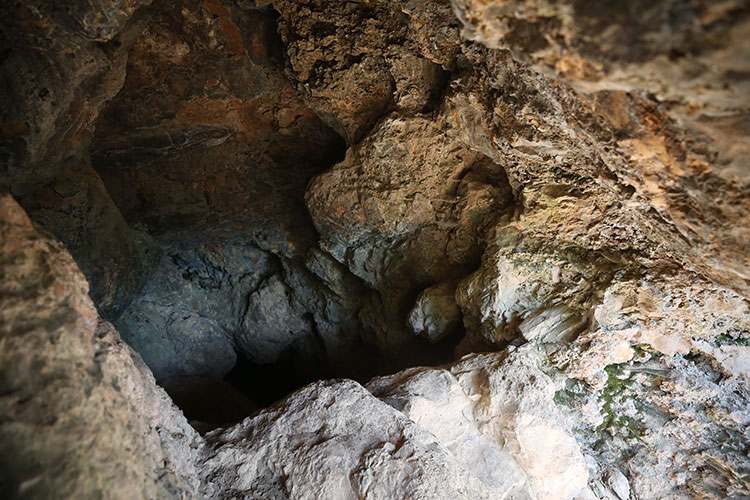
Archaeologists find chipped stone tools of Ice Age people in 86,000-year-old Inkaya Cave
Chipped stone tools belonging to the late Ice Age people who migrated from Europe and lived in the region until 40,000 BC were found during ongoing archaeological excavations in the 86,000-year-old İnkaya Cave.
Inkaya Cave is located at the western tip of Türkiye, in the Çan district of Çanakkale.
The cave was discovered during the “Muğla and Çanakkale Provinces Survey” conducted in 2016 under the direction of Prof. Dr. İsmail Özer, a faculty member at Ankara University, Faculty of Language, History and Geography, Department of Anthropology, Department of Paleoanthropology.
Excavations have been ongoing since 2020 with the permission of the Ministry of Culture and Tourism, General Directorate of Cultural Heritage and Museums, and with the sponsorship of Troy Copper Mining and T-Design Engineering.

During the 2024 excavations, nearly 25 thousand flint and basalt chipped stone tools and fragments dated to the Middle Paleolithic Period were found.
Flakes, blades, edge and front scrapers, notched and toothed tools, handled points, sticks, cores and Levallois type tools were unearthed.
A significant portion of the chipped stone tools were recovered from the area known as the “atelier”.
It is estimated that the finds are not similar to those obtained from other cave excavations in Türkiye and may be related to the Balkan Paleolithic in general. The Inkaya excavation aims to reveal the presence of fossil humans in Western Anatolia and to shed light on the mutual migrations of Paleolithic people between Anatolia and the Balkans.

Neanderthals are thought to have used the cave
Prof. Dr. İsmail Özer, head of the excavation, said: “The atelier area to the west of the cave is a place where the people of that period used as a atelier area, where they used to break pieces from the bedrock and then processed them into the tools they used daily. We have gone down to a depth of 2.5 meters so far. This is a very thick layer in terms of the Paleolithic atelier and the depth of the layer continues. We will leave it at these levels this year and continue to deepen it in the coming years. This is an area that also shows the social structure in the cave. Including this year’s finds, the cave yielded nearly 25 thousand chipped stone tools and fragments. Almost half of these were found in the atelier area. There is a dense settlement here.”

Prof. Özer said, “We think that the people living in this region are Neanderthals in terms of the period and the tools they made. We have not yet reached their organic remains, but the clues show us that there was a cave where Neanderthals lived. Neanderthals, a human species originating from Europe, started to be seen in Europe about 600 thousand years ago. The period they lived in was the Ice Age. With the effect of the Glacial Period, they had to retreat to the southern regions from time to time.”

Özer said “The fact that the Inkaya rocks are composed of flint rocks ensured uninterrupted human activity in the region. One of the primary raw materials used by the people of that period was flint. ”
“In addition, the presence of hot water resources due to the volcanic terrain both warmed the region and attracted animals to this region as it could produce fresh water resources. In addition, people could easily access the plant products that they could find in abundance in this region due to the hot water resources.”
Cover Photo: Çiğdem Münibe Alyanak/AA
You may also like
- A 1700-year-old statue of Pan unearthed during the excavations at Polyeuktos in İstanbul
- The granary was found in the ancient city of Sebaste, founded by the first Roman emperor Augustus
- Donalar Kale Kapı Rock Tomb or Donalar Rock Tomb
- Theater emerges as works continue in ancient city of Perinthos
- Urartian King Argishti’s bronze shield revealed the name of an unknown country
- The religious center of Lycia, the ancient city of Letoon
- Who were the Luwians?
- A new study brings a fresh perspective on the Anatolian origin of the Indo-European languages
- Perhaps the oldest thermal treatment center in the world, which has been in continuous use for 2000 years -Basilica Therma Roman Bath or King’s Daughter-
- The largest synagogue of the ancient world, located in the ancient city of Sardis, is being restored











Leave a Reply